
Increasingly, the concept of “green energy” is an essential requirement when contracting supplies. Whether for corporate social awareness or pure marketing, utilities increasingly use that claim to attract those more sensitive consumers with energy, environmental and ecological issues.
What is a GdO? It is a “paper”, issued by the National Commission of Markets and Competition (CNMC), and which gives to those renewable energy producers that request it (it has a voluntary nature). The CNMC does not charge for the issuance of said certification and establishes norms to avoid speculative purposes on the part of the producers. These should not be a profit motive. However, these are assigned to the suppliers for their use without such limitations.
But what is the origin and purpose of these Guarantees? The GdO’s system and labeling of Electricity was implemented by the CNE in December 2007 with the objective of informing the consumer about the source of the energy received and the associated environmental impact. The ultimate goal is to promote the generation and consumption in Europe of energy from renewable energy sources and high efficiency cogeneration. The GdO is an accreditation, in electronic format, issued at the request of the producer and have a standardized format of 1 MWh.
The regulation of the GdO is established in Order ITC / 1522/2007 as a transposition of the European Directive 2001/77 / CE, which talks about the promotion of electricity produced from renewable energy sources and with the need to guarantee the origin of electricity.
With the aim of definitively displacing high environmental impact energies, this system is designed at European level to be an incentive to the development of renewable energies, the Origin Guarantee system begins to gain importance with the increase of its demand and its price. In the last two years they have been protagonists in the negotiations. Public Administrations (CC.A.A., Town Councils), Companies and domestics join the car of this type of energy.
However, What’s actually in a GoO? To be purist, it is an administrative procedure that has environmental objectives, but it is still far from being the mechanism that assures the consumer that their energy is 100% renewable.
Regardless of what has been negotiated, if the supply point is connected to the national grid, it will be consuming energy resulting from the national generation mix. That is to say, 61.5% of the energy generated and consumed during 2018 has come from non-renewable generation. That’s a fact.

Source: CNMC
As such, there is no green market where energy from renewable sources is purchased. Everything goes to the pool. Therefore, despite your energy bill or contract ensures that the energy is renewable, the reality is that the electrons consumed by your installation are still the result of nuclear generation, burning of hydrocarbons or coal in its largest proportion.
The GdO system is an annotation agreement in a system in which there is a clear separation between the records and the physical concept. System similar to currency issuance, banking system, CO2 trading system, bilateral contracts for the sale of electricity, etc …
So what do they sell us then? Those renewable energy producers that request it will receive a certification from the CNMC of the kWh that are generated with renewables. These certificates can be transferred to the suppliers so that they can justify the “green” character of the electricity they supply to their customers. Because we do not forget that it is just a marketing tool (Green sells) for them.
These Guarantees of Origin are issued by CNMC (National Commission of Markets and Competition) at the end of the year. That is, at the beginning of 2019 we received the GODs of 2018. Therefore, it is a deferred certificate. A guarantee of origin cannot be requested in advance in relation to the energy that is going to be produced.
What life cycle has a GdO? These certificates go through the following phases:
- The CNMC will proceed to the GdO Expedition after verification of the producer’s request.
- Transfer. Transfers of any GdO may be requested by the holder of this, directly or through his representative.
- Import / Export. Guarantees may only be imported by electric suppliers (excluding the reference ones). The owner of the generation facility may export the guarantee to any member state of the EU attached to the EU energy policy. The producer that requests the export of its guarantees must renounce the specific retributive regime (Remuneration for the Operation and Remuneration for Investment).
- Redemption. The redemption of a GdO consists in the assignment of said guarantees in a consumer of electricity, identified through its CUPS.
- Expiration. Guarantees of origin issued or imported in the month m of production will be considered automatically expired in month m+12.
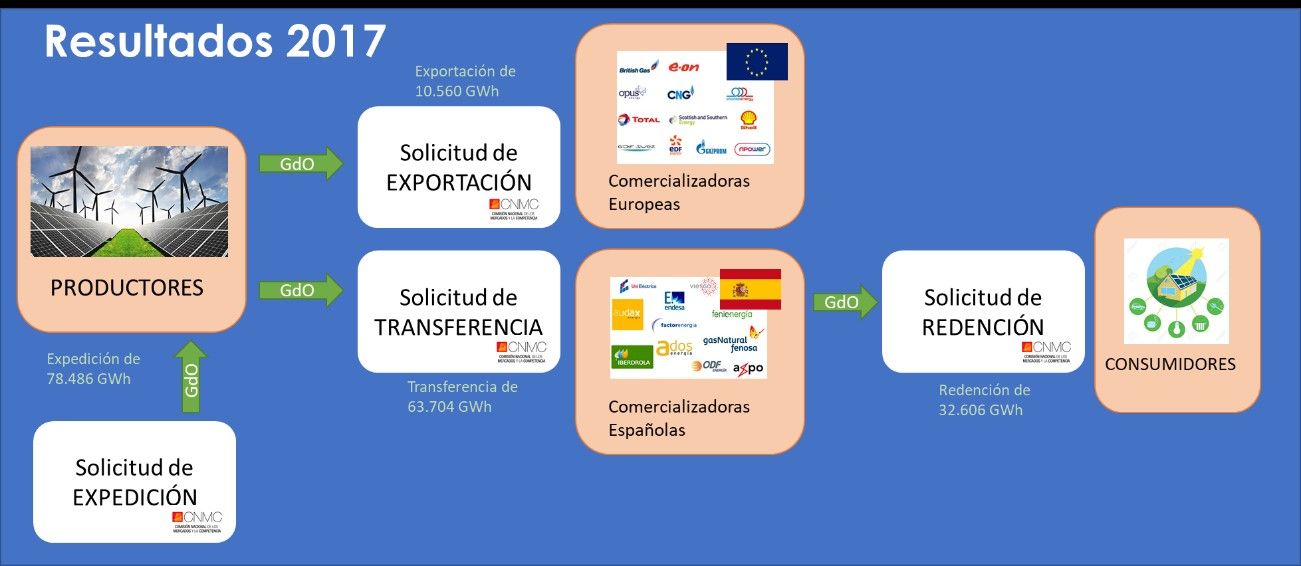
Is a GdO’s market being created? In view of the continuous growth in demand, because of “pro-renewable” awareness and regulation, the inclusion of these guarantees in the negotiations has given rise to a market. As in everything, if the offer does not meet the demand, it will start to give price signals according to the situation.
Prices have multiplied in recent years and the price difference between the GdOs of EU member states increasingly encourages international trading. A couple of years ago in Magnus we have seen negotiations in which the GdOs were given away for free and we are currently seeing continuous price revisions, reaching values of up to € 1.5 / MWh for each GdO.
In Spain, the issuance of Guarantees of Origin by the CNMC is free, but the regulation does not allow renewable facilities that receive premiums to profit from their transfer. But this has been changing as there have been more renewable plants coming to the market without subsidiaries and with the entry of the CNMC into the association that manages the Trade in Guarantees of Origin in Europe, the AIB (Association of Issuing Bodies).
How is the GdO’s market evolving? Undoubtedly, the boom of renewable generation and awareness is attracting the interest of suppliers, promoters, consumers. All of them with the objectives of optimize the benefits that can be derived from these guarantees.
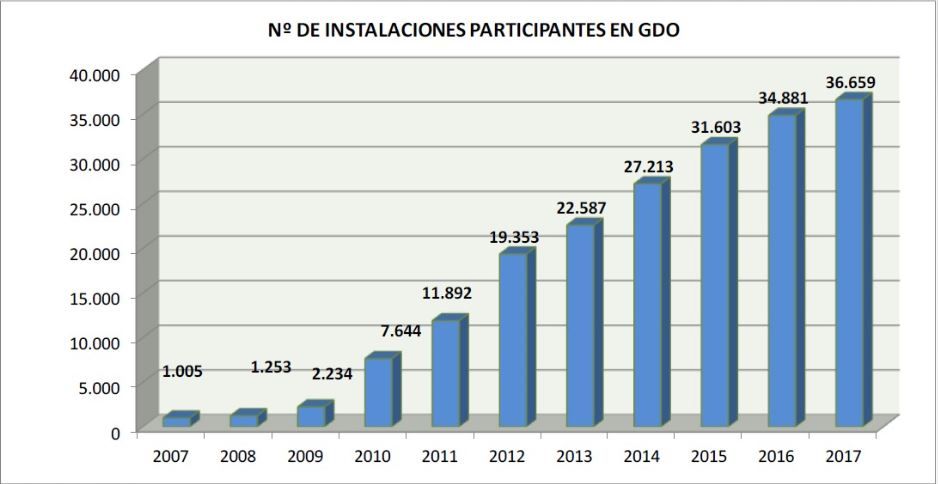
Source: CNMC
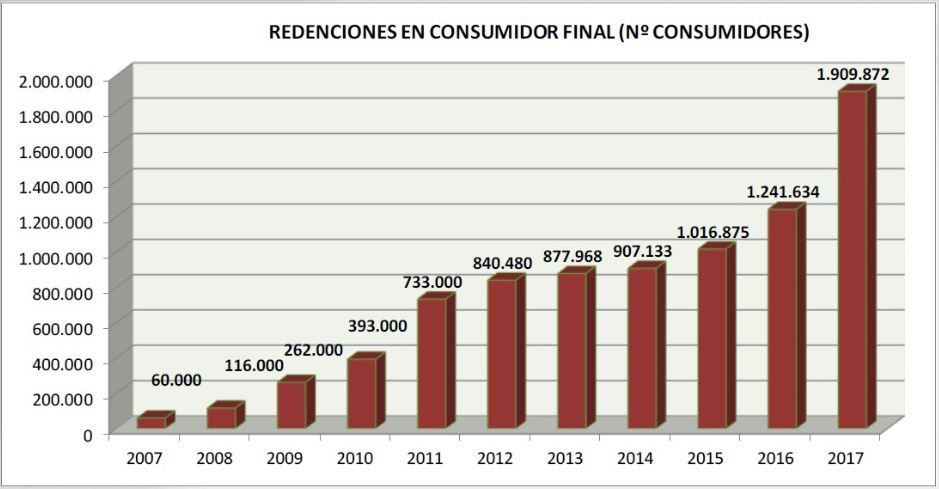
Source: CNMC
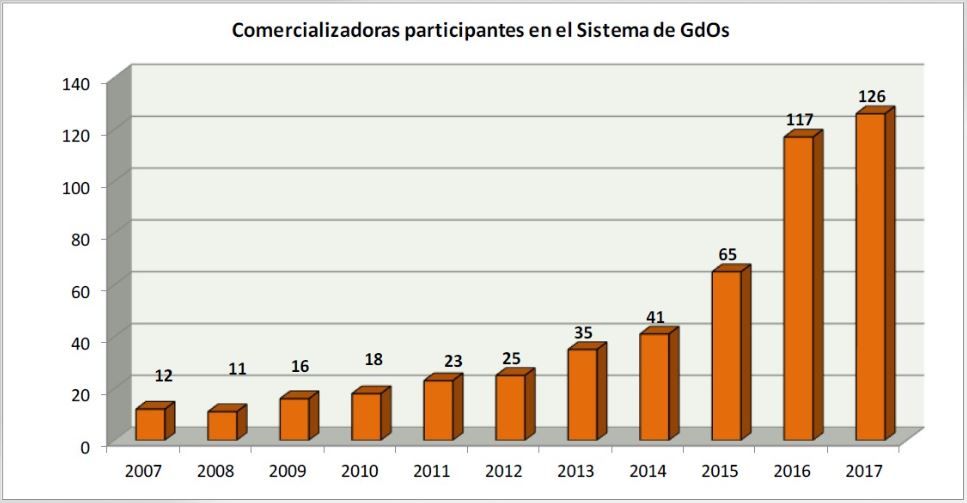
Source: CNMC
The accession of Spain in 2015 to the AIB – Association of Issuing Bodies www.aib-net.org (normalizing and promoting the transfer of certificates in international environment has encouraged interest in the guarantees system and its benefits) has encouraged the sale of guarantees to other countries.
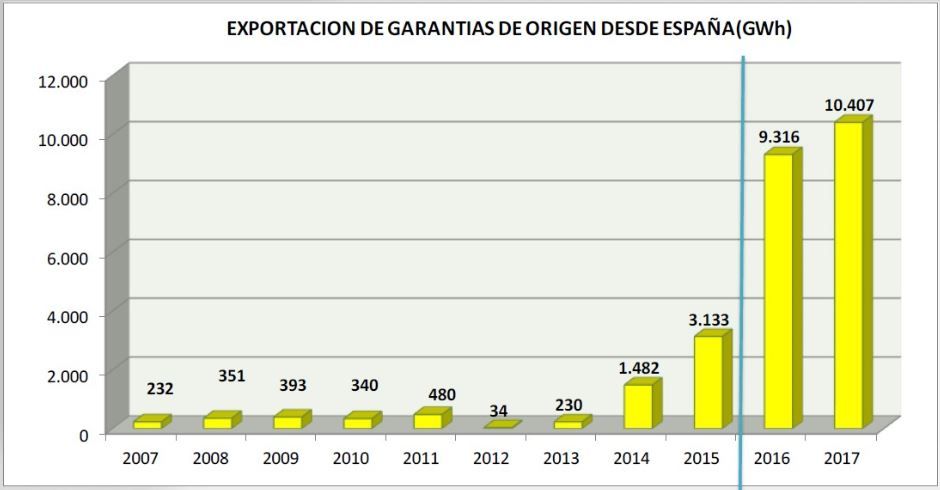
Source: CNMC
As we have stated at the beginning, the main objective of the GoOs is related to transparency and consumer information. However, it is clear that this generates income from the sale of these guarantees, but it should not be confused with an incentive system such as the Green Certificates.
In fact, the possible income derived from the trading of certificates is incompatible with the perception of regulated remuneration. What is clear is that the entrance of renewable generation not subject to subsidies will result in greater interest in this market.
From Magnus Commodities we see a great perspective of this market, both under the current scheme or in its evolution derived from existing blockchain projects that will affect the current decoupling of this scheme and physical reality.
If you found it interesting, please share it!
Recent Articles



































